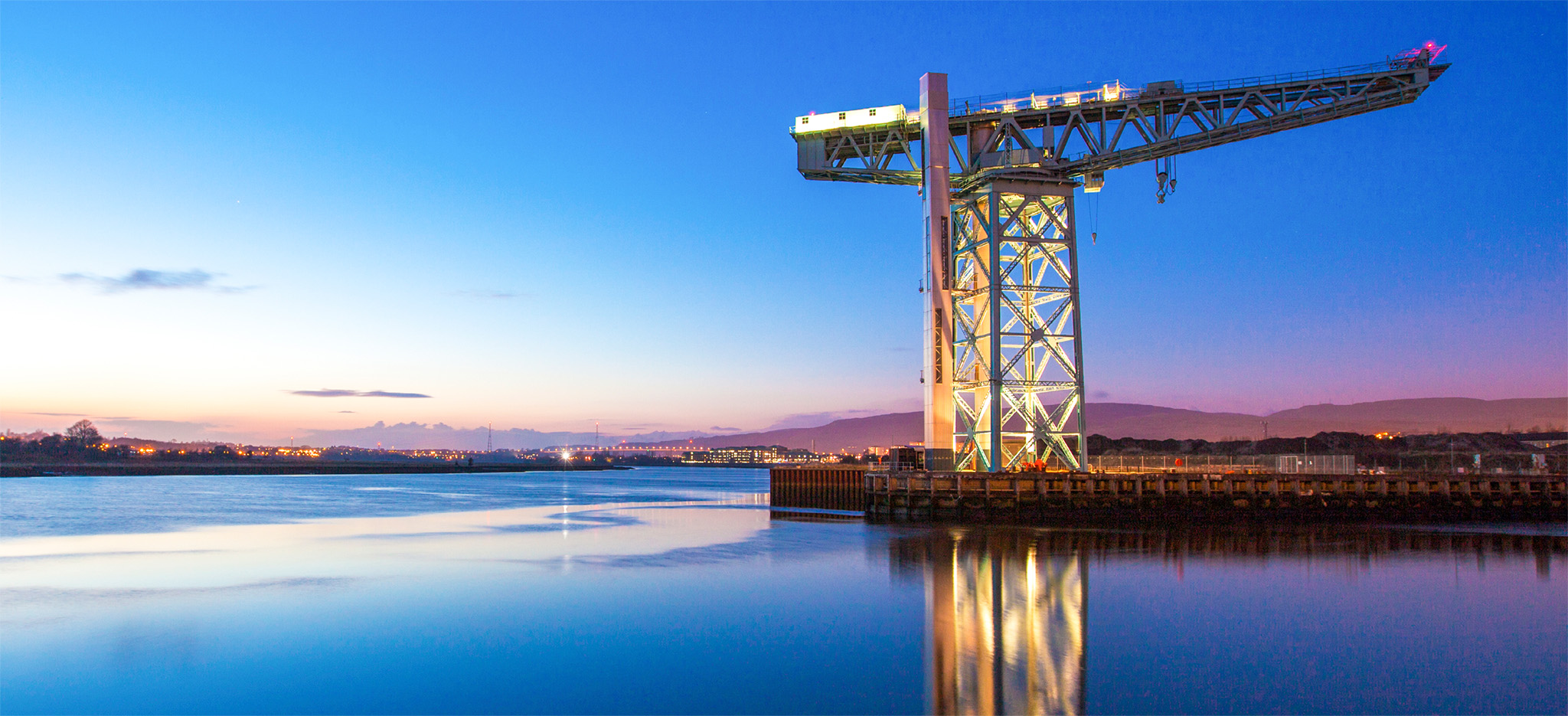Glasgow’s
Industrial Heritage
Coal, iron and steam turned Glasgow from a prosperous merchant city into the British Empire’s greatest industrial centre. Although heavy industry declined in the 20th century, its legacy is still a source of pride.

t Colossal Titan Crane and thrillseekers bungee jumping from the top
Clydebank Colossus
The towering giant steel structure of the Titan Crane is Glasgow’s gritty answer to the Eiffel Tower. Built in 1906 to hoist massive loads on to ships for export worldwide, visitors can now enjoy awesome views from the top-level viewing platform, or swing, bungee-jump and abseil from its giant boom 50 m (164 ft) above the river.
All Aboard Glenlee
Glenlee is one of the last great Clyde-built sailing ships. Meet volunteers in period costume and imagine what life was like as a voyager aboard this three-masted seafaring vessel more than a century ago. Launched in 1896 she circumnavigated the globe four times before being rescued from dereliction in 1992. The ship is now moored next to the futuristic Riverside Museum.
A Steam Cruise on the Clyde
Take a cruise aboard the Waverley paddle steamer to experience the age of steam first-hand. Built on the Clyde in 1947, the last seagoing paddle steamer in the world once carried Glasgow folk to ports like Ayr, Campbeltown , Rothesay and Helensburgh along the Firth of Clyde.
Sugar, Slaves and Tobacco
Glasgow has only recently started to come to terms withthe unsavoury sources of its early wealth. Much of the sugar and tobacco that enriched the city’s 18th-century merchants came from slave plantations in America and the Caribbean. When slavery was finally abolished in 1833, plantation oweners reinvested their windfall in the new industrial economy.
Did You Know?
Glasgow was a hub for manufacturing ships and armaments during the first and second world wars.
